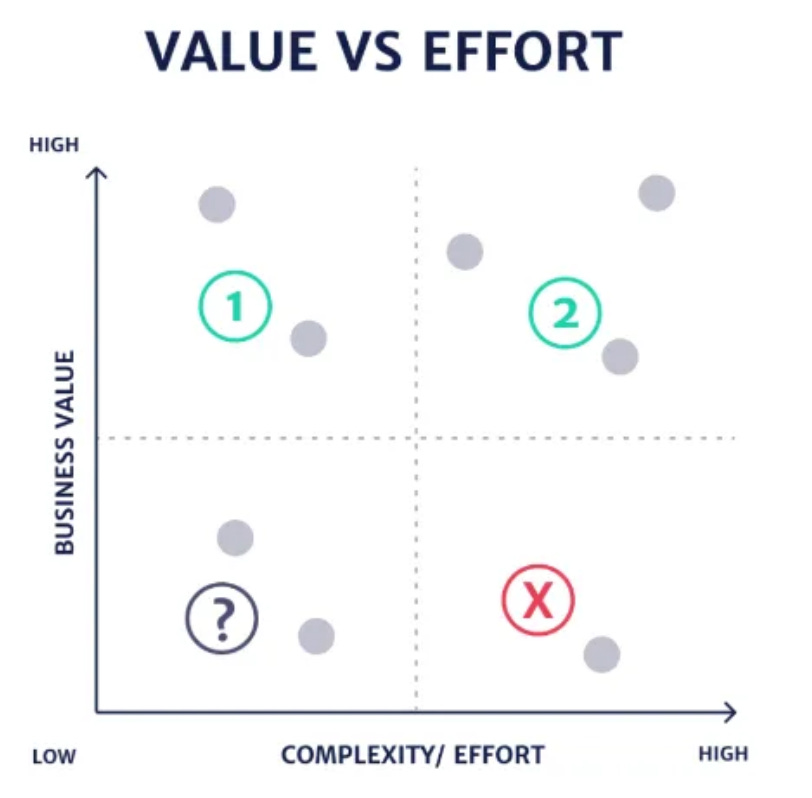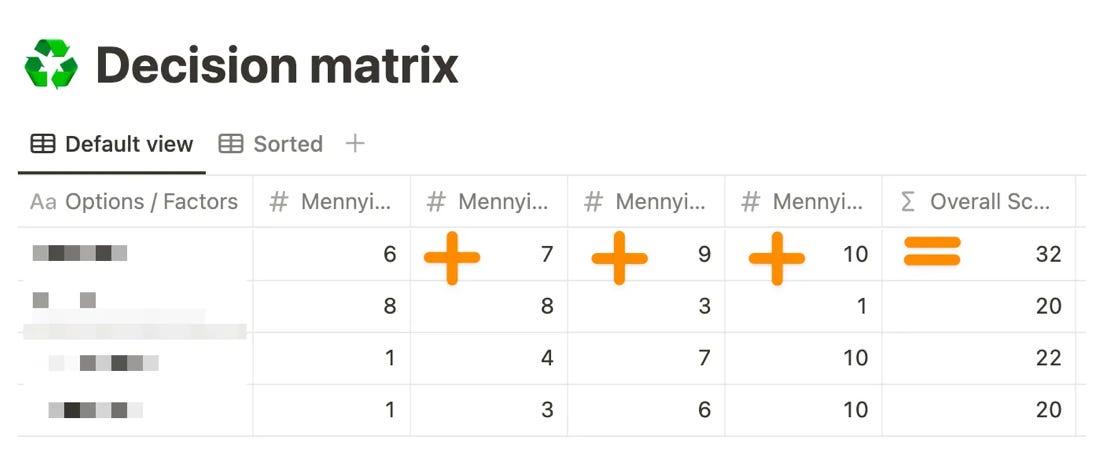You can listen it, up here:
⏳ Current status
👥 Active users: 1376
📝 New Developments: web application, Halloween update 🎃
Now you know our story and who's behind BookBase.
Now let's find out why it is both very easy and terribly hard for Us at the same time ⁉️🤨
🍀We have it so easy!
Because we can be proud of something that other app does not. We have a: Supporting Community
This Supporting Community allows us to shape the App the way that works best for YOU. So luckily, we don't have to think about what new Features to make very often, because we keep getting ideas from you.
However, sometimes, that's a disadvantage...
I'll let you know why in a moment!
❌ We have a terribly difficult job or at least we have had!
Because we got so many good ideas, but sometimes didn't even know where to start.
Physically, the list was so long that it took several scrolls to get to the end.
(I swear it was longer than this email will be)
I'm not going to lie, at first it was a very frustrating feeling to have all these options, but no idea where to start... 😰
But then Gabriel Weinberg’s Super Thinking book came by 🧠
📕 Book recommendation: A book called "Super Thinking" teaches us what are called "Mental Models", which can help us make more thoughtful decisions. These are used by many of the very famous billionaires (Elon Musk, Jeff Bezos, Bill Gates). Of course, you can find it on BookBase!
📕 Book Recommendation 2: Another similar book on this topic, written for more advanced readers, is "The Great Mental Models vol. 1-3" by Shane Parrish. Here he goes a bit overboard into mental models and gives specific examples, both from Chemistry and Biology. And this book is about to be added to the BookBase!
🤔 Why do I need these Mental Models?
Because we had so many options that we could have "made a Danube from it" so we had to shorthern them down somehow.
We had to make important decisions in order to optimize our resources (time and energy) and get the most out of the Application.
Mental Models help us to exclude emotions from the decision-making process and try to rely on pure logic, giving us a sure "crutch"!
I honestly don't know what would have happened to us if I hadn't found Mental Models that evening. But we'd probably still be "grinding" over which irrelevant function to develop. 😒
💭How to apply this in real life?
There are many types of Mental Models. I'm going to introduce you to the ones I've used and that have helped me in certain areas of my life.
The rough thing is, once you get the gist of it and try it, you want to use it everywhere. 🤯
Let's get started!
First Principles
This is the Mental Model that Elon Musk likes to use a lot. He has highlighted in several videos that he used this Model when starting Tesla and developing SpaceX.🚀
The whole point of the Model is that you try to take everything back to basics and build from there.
Musk used this for Tesla batteries, everyone told him it couldn't be done for under $600/ Kwh.
Because "Batteries have always been expensive."
Musk wasn't satisfied with that, he questioned the whole thing and thought about it until he figured out that if he bought the raw materials for the batteries separately, he could get it for as little as $80.
... and BAMM it happened! 💥
Here is a video of him explaining this Model.🎥
I used this when I was thinking about the whole App idea (I didn't know what it was at that time, it just came instinctively). I questioned if it was really possible to improve just by reading?🧐
💡Side note: A very similar technique to this is the "5 Whys" Sakichi Toyoda the inventor of it and were being used at Toyota. The idea is that any problem you encounter 5x ask why, for example:
I can't go on holiday. - Why?
Because I don't have enough holidays. - Why?
Because I work for a company and they won't let me go. - Why?
Because I like security too much. - Why?
Because my parents raised me that way when I was little.
Inversion
This is perhaps one of the most interesting and versatile uses of the Model. The very popular Alex Hormozi uses it in his videos (very well, - I might add), if you don't know him already, be sure to check it out. 💪🏼
The technique is all about trying to imagine the opposite of your result and starting from there, for example:
I'm not saying "This is how to get rich in 5 steps!"
I'm saying "This is how to stay poor in 5 steps!"
I tell you what you need to do to stay poor and I hope that you will realize and do the opposite, which will lead you to...
Become rich! 😉
We used this to see what it takes to make a HORRIBLE App. We wrote a list of things that would make everyone hate the App and we try to keep crossing things off the list, which results in...
We don't have a Terrible App that results in...
That we have a good App! ✅
You can also find a picture of this Mental Model here:
🚨If you want to try BookBase, you can do it here for 5 days for free!
If you have any problems with the link, just download the App and you can activate the trial.
Hard Choice
This is an infinitely simple technique that's worth using when you're faced with a very difficult decision. Draw a graph like the one you see below and evaluate the options on it. ✏️
We're going back to 4th grade Math, but relax don't be alarmed, I won't be grading. 👨🏽🏫
On the y-axis, determine the value or importance.
And on the x-axis, the complexity or difficulty of the problem.
In the diagram, it is best to put something in the 1st quarter, then the 2nd quarter.
The ? quarter is something that is probably a redundant task, as it is not difficult, but it doesn't yield much. And the X place is what you want to avoid, since it's a difficult task, but it makes almost no difference.
We used this when we had to decide between our Web App and our Dashboard 😎
RICE
RICE is an English acronym for Reach, Impact, Confidence, Effort.
It is a very specific technique and is almost exclusively used for such corporate decisions.
In return, it is extremely effective! 😉
In short, we have to evaluate each opportunity based on:
How many people would it reach?
How much difference would it make?
How confident are we?
How easy would it be to do (money, time, energy)?
We add these up and where more points come up, it is worth starting with. 🙏🏻
Specifically, we haven't used RICE yet (because we have other factors in the formula), but we use its "big brother" the "Decision Matrix" for complex decisions these days.
Decision Matrix
Almost exactly the same principle as the RICE, except that here the columns are defined by us and we decide what can be in them. 🧠
We have these for example:
What are the chances that it would bring new users?
How short would it take to develop?
How much would it improve the user experience?
How much would it make our job easier?
We are actively using this with the guys at the moment. You know that I never keep secrets from you, the only reason I cover new developments is because there are 1-2 surprises that I think will be big if you only see them when they come out! 🤫
💡Side notes 2: For those who are already very pro at this, they can also do a weighted average, meaning that let's say if time was the most important factor, that score would count 2x in the final score, so you get what is called a "weighted average". You know, kind of like when your grade is at a high level. Which I also thought was totally unrealistic back then, because it was the hardest, but anyway... that's another topic.😅
Second order thinking
Another infinitely simple Mental Model that you can apply in several areas.
It's simply a matter of looking at what else your decision would lead to, for example:
I decide to go abroad as an exchange student for 1 year. 🌍
Immediate result: I go abroad and have fun.
Later result: as soon as I get back home, I'll slip for a year or I'll have to take an exam.
Even later result: I'll gain a lot of experience and contacts abroad and it will look good on my CV.
We use this when we've made a decision with great difficulty and want to know the long-term consequences. So, it's more of a decision-confirmation technique for us.
The Eisenhower matrix
The Eisenhower matrix is a simple and easy-to-use method for prioritizing tasks and managing time more efficiently.
The matrix is used to prioritize each task according to its importance and urgency. The Eisenhower matrix gives you an almost instant overview of the priorities of the tasks you have to complete. 😎
I try to use this for my own tasks with more, sometimes less success. I started using it 3 weeks ago and I force myself to use it because I know it's useful, but sometimes it's easier just to put it at the bottom of the To-Do list... Well, that's laziness and an excuse, but I'm a human too! 🙃
💡Side notes 3: We first saw the Eisenhower Matrix in Stephen R. Covey's book - The 7 Habits of Highly Effective People (of course, that's also on BookBase). However, the matrix itself is named after David D. Eisenhower, the US Army General.
📚Lesson: You can save yourself a lot of time and energy in your life if you learn to use these techniques early enough and yes, there are indeed situations where you have to listen to your heart, but for everything else, there are the Mental Models.
If you want to dive deeper into this topic then, by all means, read/listen to the book "Super Thinking" at BookBase.
Or visit this site, because you can also learn about many Models here, for free, so much so that it's all in English. -
🙏🏻 I honestly hope it was useful.
Because, I know how much a blog article - like this - would have helped me back in the day. Not just in business, in any area of life where you have to make logical decisions.
If you like it just a little bit and want to do something to thank me, just use the button below to send it to a friend, maybe it will help them and they will thank you!
🧪 A new experiment
An interesting system idea popped out of my head; you can vote below how much you liked this Post. This will hopefully tell us if we like the current style or if we need to change it a bit. 🙏🏻
⬇️ Please vote below (you may only be able to vote on the website)
✍🏼 And feel free to reply to this email or post a comment! I will try to answer all of them!









